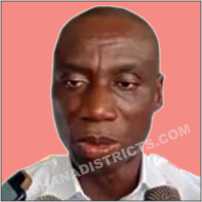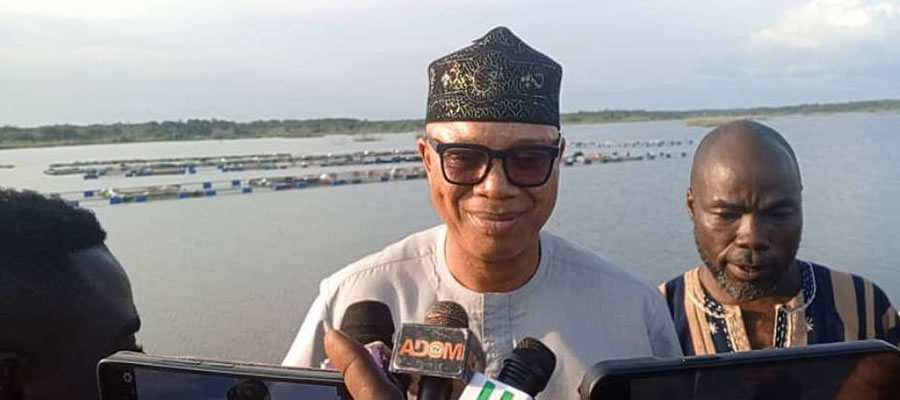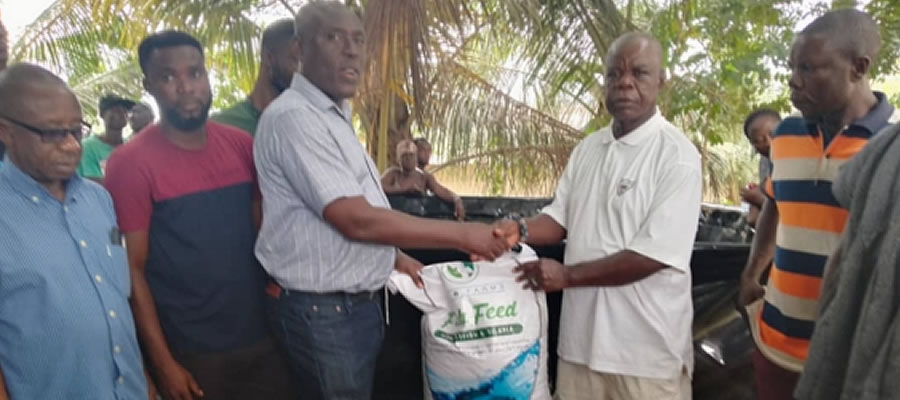

Relevant Data
Location And Size
The Gomoa East district is located in the south-eastern part of the Central Region and situated between latitudes 5014’ North and 5035’ North and longitudes 0022 West and 0054’ West. The district is uniquely situated among other districts, bordered on the North East by Agona East district, on the South-West by Gomoa West, on the East by Awutu-Senya District, and on the South by Efutu Municipality whilst the Atlantic Ocean is found to the south eastern part of the district. The district covers an area of 449.63 square kilometres.
Climate
The district experiences two rainfall seasons. The major rainy season is from March/April – June/July while the minor season is from September – November. The main dry season is from November to March and a minor one from mid-July to mid-August. The rainfall is generally low along the coast and gradually increases northward. The rainfall is highly variable with annual total varying from year to year and even monthly totals also vary yearly. However, this pattern is changing with the major rainy season starting late and therefore reducing its duration. Mean annual rainfall currently ranges between 70mm and 90mm in the Southern coastal belt and between 90mm and 110mm in the North-Western semi-deciduous forest areas. Gomoa East has the benefit of experiencing two wind systems; the south-western monsoon winds, whose direction influence the rainfall pattern and the north-eastern trade winds which herald the dry harmattan season. The effects of the harmattan winds are severely felt between January and February.
Relief And Drainage
The district falls within the coastal plains. The relief is highly undulating with a number of hills. It generally rises gently from the coastal south to the north with isolated hills, forest dissected plateau in the north and coastal plains in the south with the Yenku hills forming a broad ridge with a maximum height of 215m. The slopes are generally moderate; but become steep in a few places. The Togo rocks also give rise to hills along the coast at Nyanyano and Fetteh.
The drainage system of the district consists of few rivers and numerous streams. The major ones being the Ayensu and Brushing Rivers which flow into the sea near the Oyibi lagoon near Winneba and the Apaa Lagoon in Apam. Some of the streams found in the district include Nyanya near Nyanyano, Pompon near Fetteh and the Pretu.
Vegetation
The district has two main vegetational zones - the dry coastal savannah and the moist semi-deciduous forest. The coastal savannah consisting of grassland with scattered patches of thickets stretches from Fetteh in the south eastern part of the district to Langma (Dampase) at eastern edge bordering the Ga South district.
The moist semi-deciduous forest is mainly found in the northern parts of the district around Afransi, Amoanda, and Lome areas. At the extreme northern and north-western parts near Gomoa Eshiem and Gomoa Takyiman, parts of the vegetation have the semblance of a tropical rain forest. In this part of the district are found most of the cocoa and coffee farms.
The moist semi-deciduous forest is characterised by tall trees, interspersed with grass cover, shrubs and soft woody species. The situation is akin to a tropical rain forest which has been degraded into a secondary forest. As a result of the continuous burning coupled with bad farming practices, the moist semi-deciduous forest is gradually being degraded into secondary/savannah zones. The coastal savannah zone consists mainly of grasslands with scattered thicket of shrubs of different species dominated by the neem tree.
Two prominent forest vegetation belts exist in the district, namely, the Yenku forest reserve and the Yenku afforestation belt. Both are characterised by tall trees which are mostly evergreen throughout the year. These two belts/reserves are located between the Brushing and Pretu rivers which together form a potential agriculture zone of the district.
Geology And Minerals
The district overlies the upper Birimaim, lower Birimain, Cape Coast granite rocks and Foso series. These granite rocks form the basis for the high potential of quarry stones mined around Gomoa Assin, Gomoa Fetteh Kakraba and Ojobi areas.The Birimaim rocks which form the basis of illumine, zircon and monazite are found to the western part of the district.
Soils And Agricultural Landuse
The parent materials from which the soils found in the district are granites, upper Birimian rocks, and sandstone and river alluvium. These can be further categorised mainly into four soils namely; the forest ochrosols and oxysols intergrades, tropical black earth and forest lithosols. The forest ochrosols has a high nutrient value and is suitable for both tree and food crops, including cocoa, coffee, citrus, maize, cassava, pineapple and vegetables.
The forest ochrosols and oxysols intergrades have lesser nutrients compared with the forest ochrosols but have similar texture. This type of soil also supports tree crops such as cocoa and all food crops.
The tropical black earth mainly found along the coastal areas and lagoons, is thick, sticky and dark in colour containing a mixture of a high percentage of magnesium, calcium and lime. During the rainy season, these soils become thick and sticky but become compact and hard and crack up during the dry periods. These soils are potentially suitable for the cultivation of rice, cotton and sugar cane especially under artificial irrigation.
The forest lithosols are also referred to as rocky soils due to the underlying hard pan and making it poor in nutrient value. However, they can support the cultivation of vegetables. Crops such as sugar cane, maize and pineapple are also grown along the valleys. These soils cover a wide area of the savannah belt of the district.
In view of the nature of the physical and natural environment described above, the people of the district are mainly engaged in farming and fishing for their livelihoods. The seasonal nature of economic activities namely fishing and faming has contributed immensely to the poverty situation in the district. This has greatly fuelled the seasonal migration of the people especially the youth to other districts in search of sustainable livelihoods. It is therefore imperative for alternative livelihood programmes to be pursued vigorously in an effort to reduce poverty in the district. The presence of the Millennium Challenge Account (MCA) programme also presents an opportunity for the potentials of the district especially its low lying nature of the topography to be tapped.
Date Created : 11/30/2017 3:38:06 AM









 facebook
facebook
 twitter
twitter
 Youtube
Youtube
 +233 593 831 280
+233 593 831 280 0800 430 430
0800 430 430 GPS: GE-231-4383
GPS: GE-231-4383 info@ghanadistricts.com
info@ghanadistricts.com Box GP1044, Accra, Ghana
Box GP1044, Accra, Ghana